Side cutters: types and their characteristics
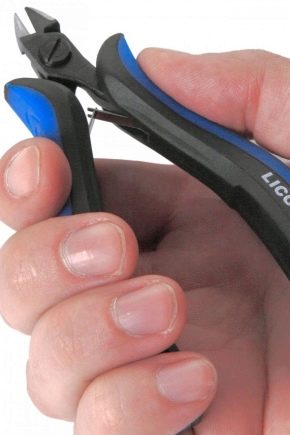
Side cutters are a popular tool and are widely used by both DIYers and professionals. Their popularity is due to the effectiveness of their application, as well as their ease of use and inexpensive price.
What it is?
Side cutters are one of the varieties of nippers and belong to the category of fitting and assembly tools. They are arranged quite simply and consist of a handle, a return spring and cutting jaws with a lateral arrangement. The handles are connected to each other by means of a reinforced hinge, capable of giving the jaws a smoother movement. The return spring is located between the grip handles and is responsible for returning the lips to their original position after biting.
The main difference between side cutters and end cutters is that the jaws of the nippers are perpendicular to the handle, and the side cutters are parallel or at a slight angle.
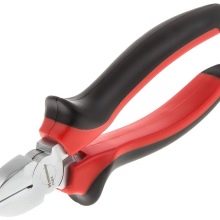
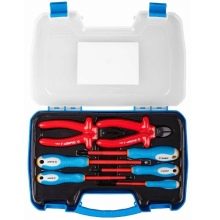

The requirements for the tool are clearly spelled out in GOST 28037-89 and imply the use of steel grades U7, U7A and 8xF for its production. In this case, the cutting edges must have a hardness of 55.5 to 61 HRC according to Rockwell, the size of the allowable gap between the cutting edges should not exceed 0.1 mm, and the articulated diametral gap should not be more than 0.5 mm on each side. The force when opening the jaws is also regulated by the state standard and must be within 9.8 N. 200 mm - 0.4 mm.
The principle of operation of side cutters is based on the principle of operation of the lever, in which, due to the difference in the lengths of the handles and lips, it becomes possible to compress the latter with greater force. The scope of the tool includes household needs and professional repair and construction work. So, side cutters are widely used for the installation of electrical networks, consisting mainly of aluminum and copper wires with a voltage of up to 1000 V, as well as for cutting thin metal, plastic and even steel reinforcement.

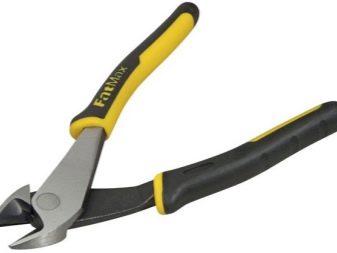
Types and their characteristics
The main feature of the classification of side cutters is their specialization. According to this criterion, the tool is conventionally divided into 4 groups, each of which has its own working qualities and purpose.
Standard
This type of side cutter represents the most numerous group of tools and is intended for cutting wires and wires up to 2.3 mm in diameter. The advantage of standard models is wide consumer availability, low cost and a large assortment, represented by both well-known world brands and budget models of little-known firms.
The disadvantages of this species include the inability of the tool to interact with materials of increased hardness and the frequent absence of an insulating coating on the handles, which makes it impossible to use them when installing electrical networks.
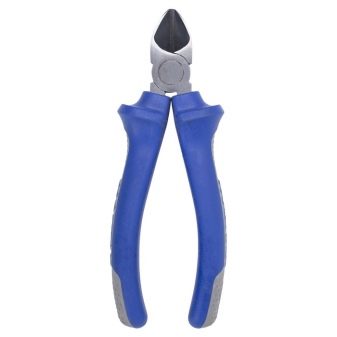
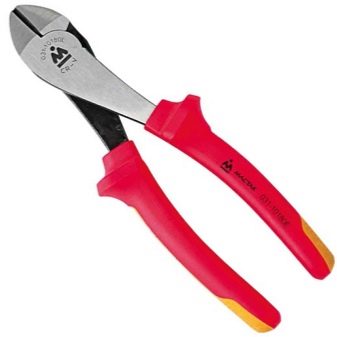
Reinforced
Power side cutters are designed to perform locksmith and assembly work of increased complexity and belong to the category of professional tools. For the manufacture of cutting elements of such models, extremely strong carbon steel of high hardening is used, and the cutting edges are often equipped with victorious or carbide taps.This allows them to handle sheet metal and thin rebar with ease.
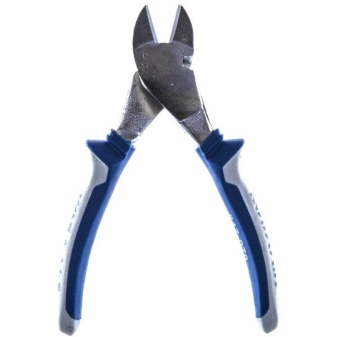
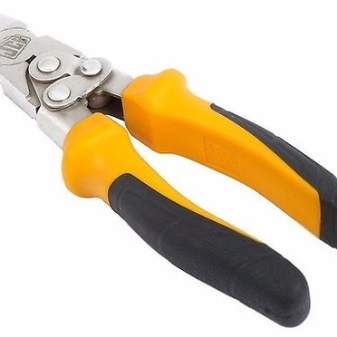
High voltage
This type of side cutter has a rather narrow specialization and is intended for performing electrical work. Instruments in this category are divided into two subtypes. The first includes models in which the handles are completely made of dielectric material, which allows operation on networks with voltages up to 1000 V. In the second, only the braid of the handles has a dielectric effect, which limits the scope of their use to exclusively low-voltage lines. Both types of electrical side cutters are equipped with protective stops that separate the handle from the working lips.
The stops prevent the hand from sliding off the handle and touching the lips that are in contact with the electricity.

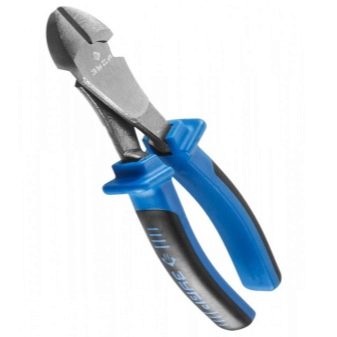
Mini cutting pliers
Small side cutters are actively used by installers of network equipment, radio electronics specialists, repairmen of computers, TVs and other electronic equipment. They differ from large counterparts in miniature size, long narrow jaws and low weight. Such a tool is designed to perform work in hard-to-reach places that cannot be reached with full-size models.
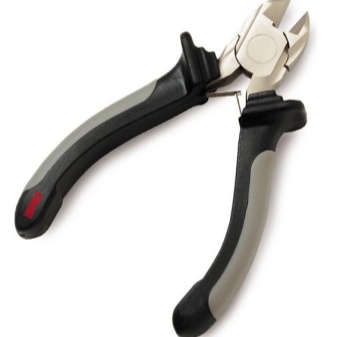
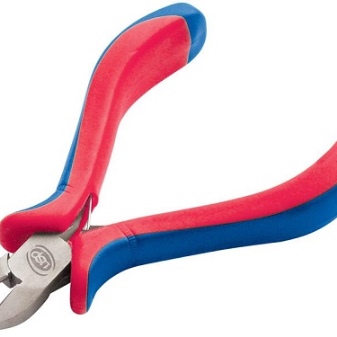
Top Models
The modern market for fitting and assembly tools presents a wide range of side cutters. Below are the most common and demanded models that have a large number of positive reviews and are bestsellers of specialized online stores.
- Reinforced German model Kraftool 2202-6-18 z01manufactured in Taiwan, is classified as a professional tool and is designed for wire and wire cutting. The working jaws are made of chrome vanadium steel, which allows the side cutters to cope with sheet metal, nails and thin reinforcement. Tool length is 180 mm, weight - 300 g.
- Taiwan model Jonnesway P8606 is a representative of a group of standard tools and is designed to perform household, fitting and repair work. The side cutters are equipped with a comfortable, ergonomic two-component handle, are 240 mm long and weigh 240 g.
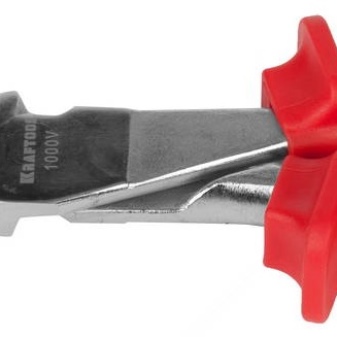
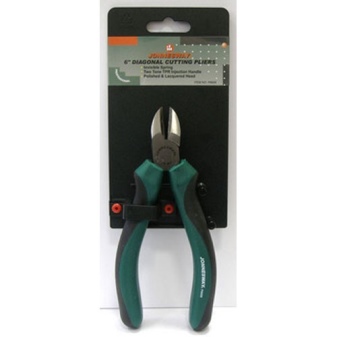
- Model of the German brand Matrix Nickel 17520, manufactured in China, belongs to power tools and is designed to work with materials of high hardness. The cutting edges are additionally hardened with high frequency current, which is why they are characterized by increased wear resistance and a long service life. The model does not have a dielectric coating, and therefore cannot be used for electrical work. Product length is 160 mm, weight - 230 g.
- Side pliers Z 18006 200mm Prof. elec. Wiha 38191 made in Germany belongs to the high-voltage type and is designed to operate on electrical networks with voltages up to 1000 V. The handles are made of dielectric material and equipped with a protective stop. The product is equipped with the BiCut system, which allows doubling the biting force, which makes it easy to bite off screws and nails.
For the manufacture of semicircular jaws, tool stamped steel, which has undergone induction hardening, is used, and Wiha's proprietary Dynamic Joint is able to transfer hand forces to the working part as efficiently as possible. The two-piece handles are equipped with a non-slip coating, the length of the product is 200 mm, and the weight reaches 350 g.
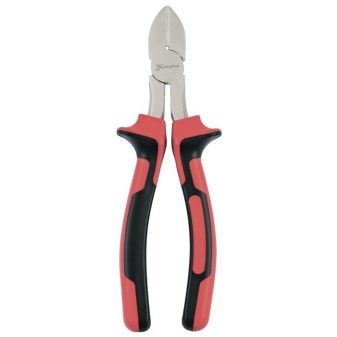
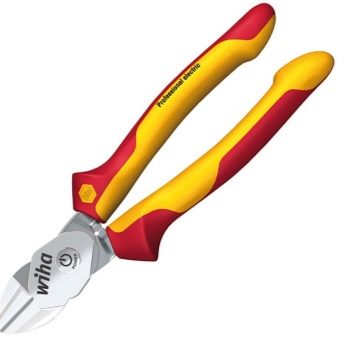
- Mini side cutters Kroft 210115 is a compact tool with a length of 105 mm and a weight of 60 g. The model copes well with line, rods and wire and is widely used in electronics. High-strength carbon steel is used for the manufacture of working jaws, and the handles are equipped with synthetic non-slip covers, which prevent the tool from slipping out of the hands. The product is manufactured in Russia.
- Licota diagonal mini side cutters They are also designed for delicate work and can easily cut through steel wire with a diameter of 1.2 mm, copper wire with a diameter of 1.6 mm and an electric cable with a cross section of 2 mm.
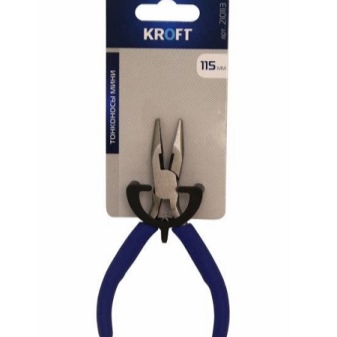
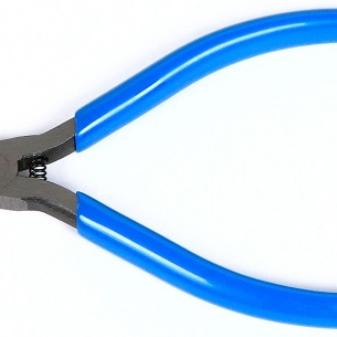
Subtleties of choice
The defining criterion for choosing side cutters is their purpose. So, when buying a tool for professional activities, it is better to choose a reinforced multifunctional model, which, in addition to the ability to bite through hard materials, can be used when performing electrical work. It should be remembered that for work on high-voltage lines select only those tools with a handle made entirely of dielectric materials, while for the installation of low-voltage lines, it will be enough to have a special insulating braid. If the model is chosen for work in a home workshop and does not involve working with thick cables, metal fittings and sheet metal, then it would be more expedient not to overpay extra money and buy an inexpensive standard model.
The next selection criterion is the quality of the product. When buying a tool, it is imperative to check the tightness of the lips and make sure that the hinge clearances and diametrical displacement do not exceed the standards specified by GOST. Otherwise, the sponges will unevenly grip the wire or wire and, instead of biting through the material, they will crumple it. You also need to pay attention to ergonomics. This is especially important when choosing a wiring tool. It is imperative to take the side cutter in your hand and assess how comfortable it is in the palm of your hand, as well as check the operation of the return spring and the stroke of the hinge mechanism.
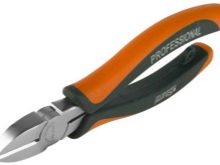
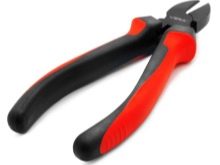
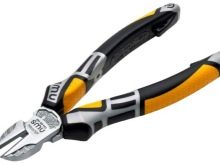
Usage Tips
Despite the apparent simplicity, side cutters are tools with a sharp cutting edge and, if used ineptly, can damage the skin of the hands. Therefore, for a more comfortable and safe use, you must follow some recommendations:
- when biting through the wire and wire, the side cutters should be kept strictly at right angles to the working surface;
- before carrying out work on the installation of the electrical network with side cutters not equipped with dielectric protection, make sure that the network is disconnected from the electricity;
- working with side cutters, it is better to grip the handle from above, otherwise there is a possibility of damage to the fingers;
- when working with a cable of a large cross-section, biting it should be performed using a special recess located behind the cutting lips;
- it is forbidden to use side cutters as pliers and remove hammered nails with their help;
- if, during the repair of the low-voltage line, dielectric side cutters were not available, but installation is still necessary, then it is allowed to wrap the handles of a conventional tool with electrical tape.
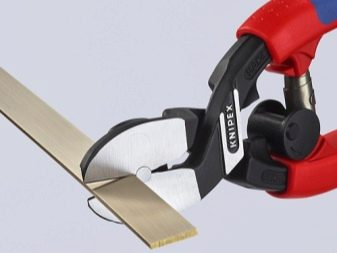
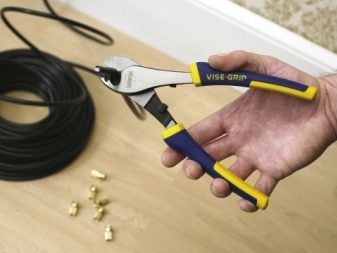
With regular use, the cutting edge of the jaws dulls quickly. And if the sharpening of professional side cutters should be performed by specialists using high-precision equipment, then household models can be sharpened at home. So, in order to sharpen the nippers yourself, you will need a regular emery or a sharpening bar. The side cutters are smoothly turned with the back side relative to the emery until the cutting edge acquires a characteristic steel sheen.
The main thing when using side cutters is to remember that even power professional models are not intended for cutting steel structures.
The main area of use of the tool is still aluminum and copper wires and wires. This must be taken into account when planning installation work and in each specific case, use a tool strictly intended for this.
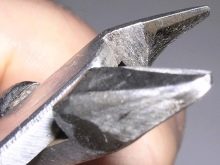

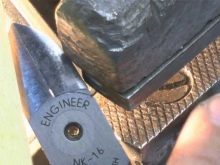
For information on how to sharpen side cutters correctly, see the next video.













The comment was sent successfully.